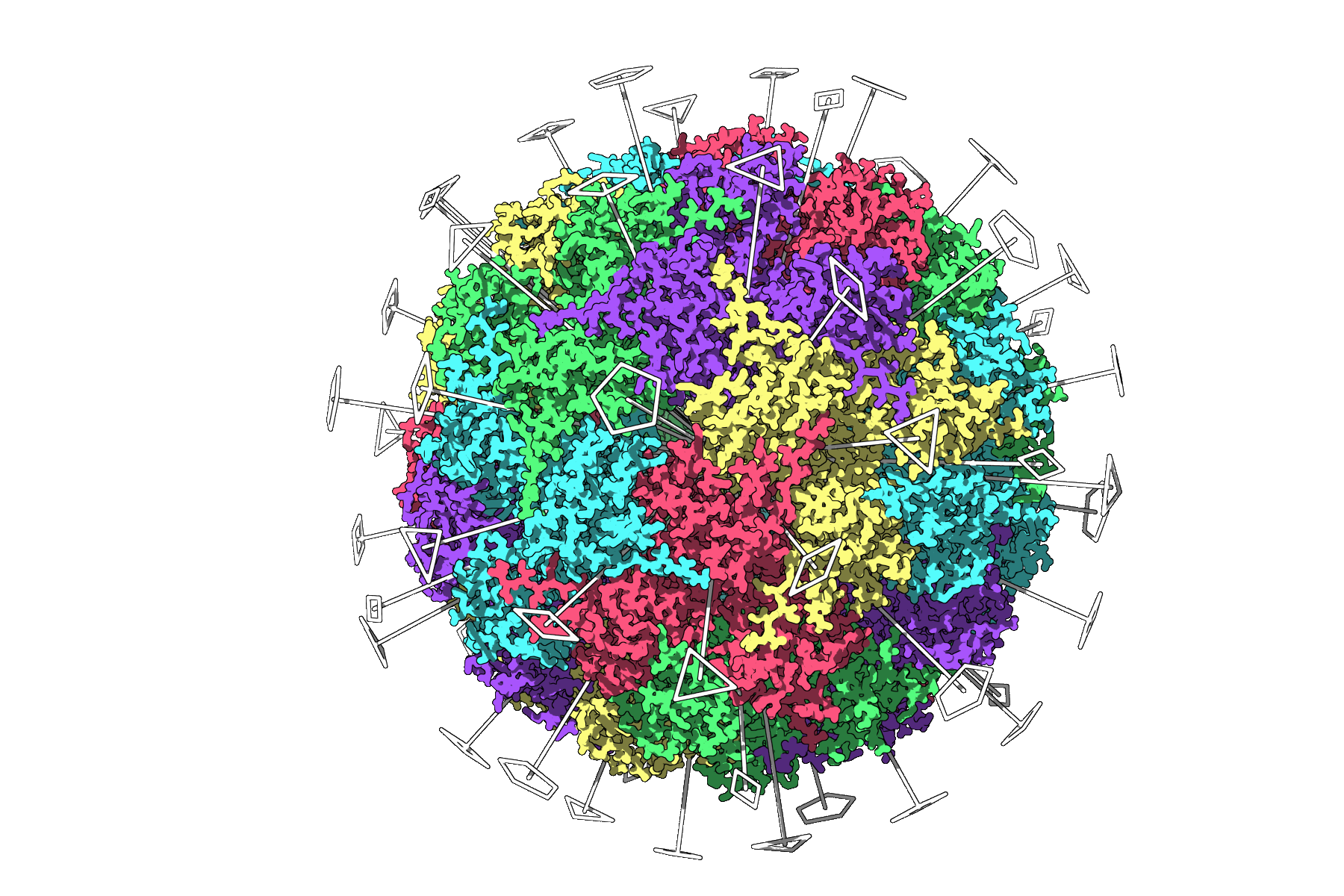When modeling large biological assemblies like viral capsids or multimeric protein complexes, a frequent question is: does this structure actually make sense? Symmetry can be a powerful clue.
Many biological assemblies exhibit some form of symmetry—cyclic (Cn), dihedral (Dn), or even icosahedral architecture. Whether you’re working with an experimentally derived model or building one computationally, verifying expected symmetry is a critical validation step.
Why Symmetry Matters in Validation
If your structure is supposed to follow a certain symmetry—say, icosahedral for a virus capsid—but doesn’t actually match that pattern, you may be looking at modeling errors, incomplete data, or accidental misassemblies. Catching this early can save a lot of time and frustration.
The Symmetry Detection extension in SAMSON helps streamline this process by automatically identifying and visualizing axes of symmetry in molecular assemblies. It detects:
- Cyclic symmetries: any Cn order (e.g., C2, C3…)
- Dihedral symmetries: Dn groups like D2, D3, etc.
- Cubic symmetries: tetrahedral, octahedral, icosahedral
This can be extremely useful when cross-checking structural expectations based on literature, electron microscopy reconstructions, or known protein family patterns.
How It Works in Practice
After opening your model in SAMSON and launching the Symmetry Detection extension:
- Click Compute symmetry to run the detection.
- Review the proposed symmetry groups — there may be multiple suggestions, especially for large complexes.
- Click on a group to view its alignment axes in the viewport. If you know the expected symmetry (e.g., D3), you can specify it manually from a dropdown list.
- Explore individual axes and their RMSD values to evaluate fit quality. Lower RMSD indicates better symmetry fit.
Take the viral capsid structure 3NQ4, for instance. This complex exhibits full icosahedral symmetry, and the extension detects and visualizes all the 2-, 3-, and 5-fold rotational axes automatically:

A misaligned structure or a defective model would fail to show such symmetry alignment, giving you immediate feedback on potential issues.
When You Want to Be Precise
Suppose you’re working on a trimeric protein like 1B4B. The extension might propose several plausible symmetry options, especially if the structure has overlapping symmetry signals. You can then:
- Pick the one with the smallest RMSD.
- Examine the visualization to see if the proposed axes make biological and spatial sense.
- Override automatic detection by selecting the expected symmetry manually, ensuring your model’s interpretation remains consistent with known biology.
Additionally, the tool allows you to inspect individual symmetry axes, align your camera view for better inspection, and color asymmetric units for clarity.
Conclusion
Symmetry can serve as a quiet validator for noisy data. By detecting unexpected asymmetries, you’re not only validating structure integrity but also optimizing your models for simulations and downstream design. Even if you’re not building symmetric nanomaterials, this step might prevent costly errors or incorrect interpretations.
To learn more, check the full documentation at this link.
SAMSON and all SAMSON Extensions are free for non-commercial use. You can get SAMSON at https://www.samson-connect.net.





